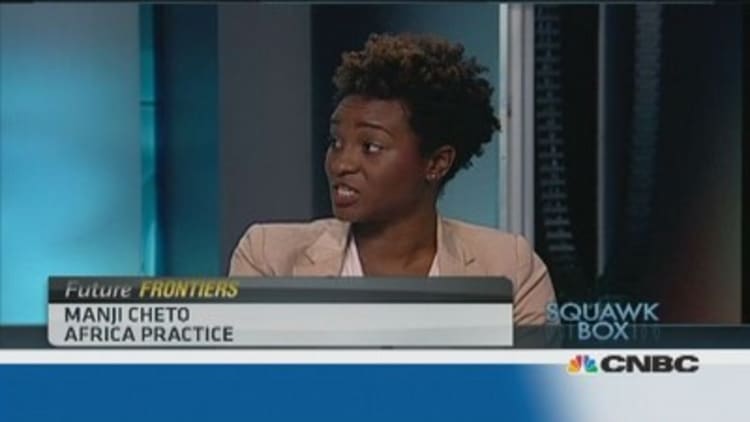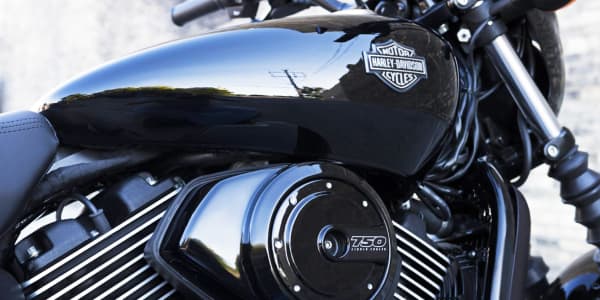Oh, to enjoy the modern conveniences of Kenya.
At least in the realm of cashless marketplaces, the east African country has been thundering along the cutting edge since the 2007 launch of M-Pesa—the M is for "mobile"; pesa is Swahili for "money."
What was originally conceived as an efficient method to make payments on microloans has been rapidly adopted by Kenyans as a way to send money from urban centers back to rural hometowns.
A husband working in Nairobi can send money home to the countryside with a couple of taps on his mobile phone. His wife can cash out at the increasingly ubiquitous shops with M-Pesa agents—the number of agents across the country increased 40 percent last year to more than 65,000—and she can also leave the money on her device to make digital payments with the hundreds of businesses who accept them.
But what's been most surprising given M-Pesa's blockbuster success—19 million of Kenya's 44 million people subscribe, including more than two-thirds of the adult population, and a quarter of the country's economy flows through the mobile-money service—is how other countries have failed to replicate that success.
(Read more: Cashless society? Not even close in US)
Everyone expected it to take the entire continent by storm. But the market in Kenya is so unique.Sunil SachdevManaging director, Fiserv International Payments Group
Kenya's long-distance lead
"Everyone expected it to take the entire continent by storm," said Sunil Sachdev, managing director with Fiserv International Payments Group. "But the market in Kenya is so unique."
Three conditions made Kenya particularly fertile ground for M-Pesa: high penetration of mobile devices; a killer application—namely, a cheap and simple solution to sending money home; and the presence of a dominant mobile carrier.
The first of these is a broad phenomenon: According to a Bill & Melinda Gates Foundation report, mobile penetration in Africa jumped from 3 percent in 2002 to 48 percent in 2010 and is expected to hit 72 percent next year. Formal banking services, on the other hand, have been used by a relatively elite few, leaving the door open to an alternate solution.
The killer app of facilitating money transfers to rural regions was somewhat unique and particularly well suited to Kenya, said Paul Makin, head of mobile money at Consult Hyperion, the lead consultancy in building M-Pesa for the mobile operator Safaricom.
(Read more: Paying cash costs Americans $200 billion a year)
"Kenya is unusual in that it has a long history of domestic migration," Makin said. But people working in urban centers had no simple and inexpensive way to send earnings back home. "It could take three days to reach the families and sometimes never arrived. So the arrival of a system that could do it cheaply and within minutes was extremely attractive."
The third condition—a single dominant player—has proved elusive in other countries, partly because the wild success of M-Pesa has caused others to rush in and create fragmented markets. Whereas in Kenya Safaricom's M-Pesa enjoyed a snowball effect, in other countries it has been harder for the obvious choice to emerge—customers mainly want to use what everyone else is using, for the sake of convenience and usability. The result is that there are more than 200 similar systems in emerging markets, but only about 10 percent have achieved momentum, Makin estimated.

Lack of interest?
Sachdev and others now also see other limitations in the M-Pesa model.
"There are many benefits to mobile money," said Neal Estey of Boston University's Center for Finance, Law and Policy. "But it should not be sold as a miracle cure for financial inclusion."
He noted that unlike in the U.S., where you may use your smartphone to access your bank account, mobile phones in the developing world are often used instead of bank accounts. For many that means having no opportunity to enjoy the benefits of formal banking: interest-bearing savings products and building a financial record to show creditworthiness.
(Read more: Virtual robbery: Bitcoin theft on the rise)
That need not be the case, said Haridas Nair of SAP, the German multinational enterprise software company, which has focused its mobile-money efforts on Asia.
In Bangladesh, where 87 percent of people have no bank account due to poverty and/or limited access to banks, poor and remote Bangladeshis had one thing going for them: Most already had basic cellphones.
Within one year of launching a mobile-banking program, Dutch Bangla Bank saw that withdrawals were becoming less frequent and customers were increasingly using the system as a de facto savings account. So DBBL initiated a program to allow them to gather interest if certain conditions, such as transaction frequency and length of deposit, are met.
"It's possible because a bank is running the service," Nair said. "With M-Pesa it's a telco."
Safaricom has an answer for customers who are hungry to earn interest and build credit: Last November, with the backing of its partner Commercial Bank of Africa, it launched M-Shwari, an interest-bearing savings account that also offers microloans, and it already has more than 1.2 million active users.
Banking on telcos
Still, Nair argued that because the telco runs the show, the bank partner is limited to selling a product to that telco's customers. "In a bank-led model, the banks needs to work with telcos for connectivity, but they are able to reach an audience that is across (numerous) telcos." Nair admitted that M-Shwari does offer something unique: a "semblance of a credit rating" that would be hard to otherwise come by for people with no banking history.
With banks acquiring mobile networks in some places and mobile networks acquiring banks in others, it may continue to be a chicken-and-egg issue.
(Read more: Zimbabwe's teen texters explain all)
"We're agnostic to models," said Khalid Fellahi, head of Western Union Digital, which partnered with M-Pesa in 2008 and now facilitates money transfers between Kenyan subscribers and people in 45 countries and territories. "Telcos provide reach that banks cannot, and it wouldn't be sustainable for them to try," he said. He added that regulators are still catching up to the fact that an M-Pesa user with the equivalent of a couple hundred dollars probably shouldn't face the paperwork and red tape a bank customer does. "It's a stored-value account like PayPal, where you withdraw funds as needed," he said.
Fellahi said Western Union makes it possible for a worker who has gone abroad for employment to avoid the delays and security risk of carrying his earnings back with him if he's willing to part with the $7, for example, it costs to send $100 home (within Kenya's borders M-Pesa's remittance fees are about 40 cents). Fellahi provided no numbers but said the service is "very popular" and continues to grow.
Just where mobile-money systems will be in a decade is hard to say.
It's a good bet M-Pesa will be going strong in Kenya. Even a 10 percent excise duty the Kenyan Treasury imposed on mobile-money transactions in February did not stop them from growing 22 percent over the past year, according to the country's central bank.
Elsewhere, big bets are being placed. Spanish telecom company Telefonica is introducing mobile wallet services in eight countries in Latin America and Europe and aims to expand that to its entire customer base—300 million people in 26 countries—in the next couple years, according to the 2012 Sybase Mobile Commerce Guide.
Fellahi said much will depend on two things: slow-footed banking regulators getting with the program and operators figuring out ways to standardize protocols.
Sachdev argued that while "it's fantastic what M-Pesa has been able to do," the future of mobile banking will sooner or later belong to banks.
—By Matt Twomey, Special to CNBC.com
Follow him on Twitter @Matt_Twomey




